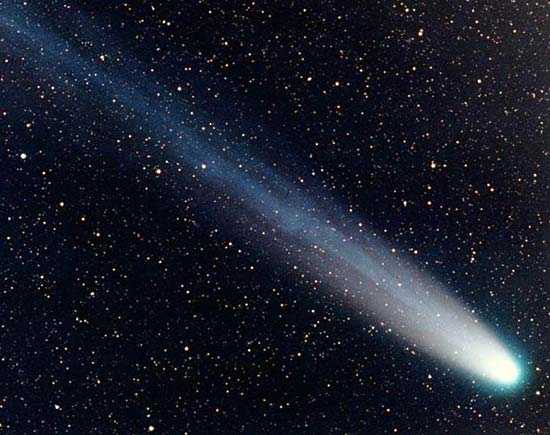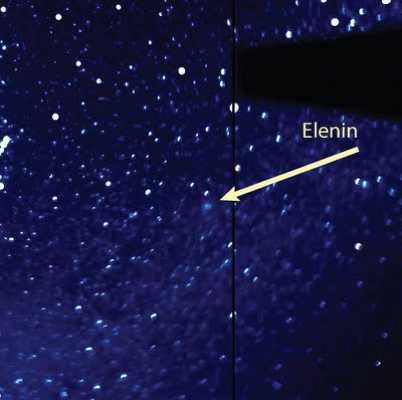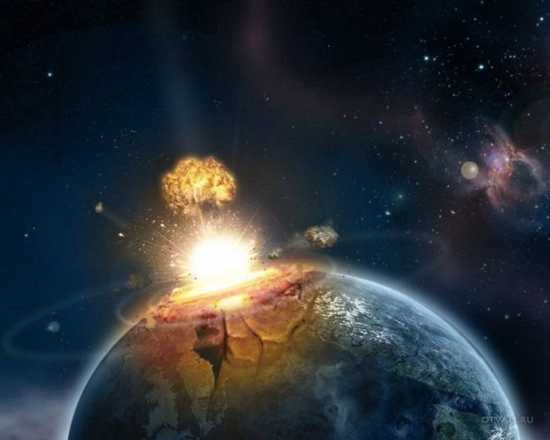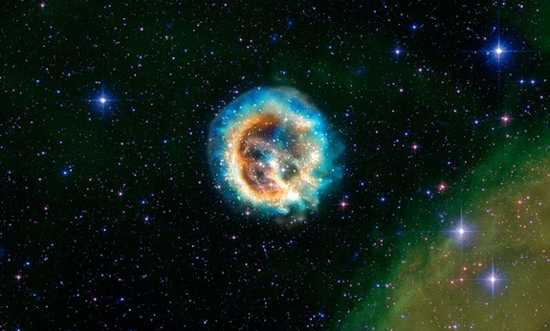 Weird Stuff
Weird Stuff  Weird Stuff
Weird Stuff  History
History 10 Legends Whose Last Moments Undid Their Glory
 Health
Health 10 Futuristic Ideas to Treat Common Medical Problems
 Weird Stuff
Weird Stuff Ten Surreal Attempts to Reverse Baldness
 Facts
Facts 10 U.S. Government Contingency Plans for the Unthinkable
 History
History 10 Weird Distractions from the Great Depression
 Movies and TV
Movies and TV 10 Fictional Kings Who Go from Good to Bad
 Food
Food The Fantastic Chemistry Behind Why 10 Popular Foods Taste So Good
 Technology
Technology 10 Futuristic Fungal Technologies
 History
History 10 Not-so-Spooky Events That Also Happened on October 31
 Weird Stuff
Weird Stuff 10 Things So Rare They’ve Only Been Found Once
 History
History 10 Legends Whose Last Moments Undid Their Glory
 Health
Health 10 Futuristic Ideas to Treat Common Medical Problems
Who's Behind Listverse?

Jamie Frater
Head Editor
Jamie founded Listverse due to an insatiable desire to share fascinating, obscure, and bizarre facts. He has been a guest speaker on numerous national radio and television stations and is a five time published author.
More About Us Weird Stuff
Weird Stuff Ten Surreal Attempts to Reverse Baldness
 Facts
Facts 10 U.S. Government Contingency Plans for the Unthinkable
 History
History 10 Weird Distractions from the Great Depression
 Movies and TV
Movies and TV 10 Fictional Kings Who Go from Good to Bad
 Food
Food The Fantastic Chemistry Behind Why 10 Popular Foods Taste So Good
 Technology
Technology 10 Futuristic Fungal Technologies
 History
History 10 Not-so-Spooky Events That Also Happened on October 31
Top 10 Facts Surrounding Comet Elenin
One of the biggest viral news stories of 2011 was the discovery of Comet Elenin (C/2010 X1). For a wide variety of reasons, people began to think the comet posed a threat to Earth. Articles were written that examined Elenin. People were intrigued by the comet and its close approach to the Earth in October, 2011. Some predicted Comet Elenin was a sign that the Maya prophecy was valid. In response to the attention, NASA was forced to give a collection of statements. They said the comet posed no threat to the Earth. On August 19, 2011, the story burst into flames and quickly disappeared. Here are ten interesting facts about Comet Elenin.

In ancient history, comets were traditionally considered to be bad omens. They are small Solar System bodies (SSSB) that will display a visible coma (a thin, fuzzy, temporary atmosphere) when close to the Sun. The main difference between an asteroid and a comet is that a comet shows a coma. Asteroids are also thought to have a different origin from comets, having formed inside the orbit of Jupiter rather than in the outer Solar System. This gives the orbital history of comets more importance.
The coma of a comet is formed when it passes by the Sun. The coma is generally made of ice and dust, and can grow to be incredibly large. In October 2007, comet 17P/Holmes briefly had a tenuous dust atmosphere larger than the Sun. It has been estimated that roughly one comet is discovered each year that is visible to the human eye. In some rare cases, a Great Comet can form which is brighter than any star in the sky. It has been estimated that one Great Comet will appear every decade.
The requirements for a Great Comet include a large and active nucleus, a close approach to the Sun, and a close approach to the Earth. In 1996, Comet Hyakutake, which had a similar sized nucleus as Comet Elenin, made an extremely close approach to Earth. The Ulysses spacecraft crossed the Hyakutake’s tail at a distance of more than 500 million kilometers (3.3 AU or 3×108 mi) from the nucleus, showing that Hyakutake had the longest tail known for a comet.

On December 10, 2010, an amateur Russian astronomer named Leonid Elenin discovered a long-period comet in the U.S. state of New Mexico. The near-earth object was given the name of Elenin and was estimated to be 3-4 km in diameter. Almost immediately after the discovery was announced, articles began to appear on the Internet that claimed the comet was dangerous to Earth. People began to make connections between Elenin and extinction level events.
It was originally estimated that the comet would pass within .24 Au (Astronomical Units) of the Earth, which is pretty close. The distance is closer than the Hale-Bopp Comet of 1997, which gained more media attention. The story reached a larger audience after it was disclosed that while using the JPL Horizons system with an observed orbital arc of 235 days, the comet shows an orbital period of approximately 11,800 years. In the history of Earth, 12,000 years ago was a sensitive time and the bridge between the Pleistocene and Holocene geological epochs.

One of the reasons Comet Elenin has received so much attention is that it holds similarities to the blockbuster movie Deep Impact (1998). For starters, in the movie, the comet is found by a teenage boy named Leo and referred to as Elle (extinction level event). In reality, it was discovered by a young Russian astronomer named Leonid Elenin, who was born in 1981 and 17-years-old when Deep Impact came out. It is a coincidence that a man named Elenin discovered a near-earth comet.
After the discovery was announced, articles began to appear on the Internet with acronyms for ELENIN, including extinction level event, near impact or extinction level event nine (indicating 9 out of 10 on the danger scale or the end of the ninth wave of the Mayan Calendar). Some said 11/9, as in November 9, when the debris tail of Elenin was predicted to be closest to Earth. In Deep Impact, a black U.S. president decides to send a mission to blow up the comet with nuclear weapons. The mission succeeds and the comet is separated into sections. However, a piece still hits Earth. After the impact, the president declares martial law, and reveals that the government has been building underground shelters. In the end of the movie, humanity is spared after the larger comet is demolished.

Since Comet Elenin was discovered, NASA was adamant in the fact that the comet would not come close enough to strike or harm the Earth in any way. People responded by using a collection of hypothetical scenarios for disaster. For example, if Elenin was to hit an asteroid while passing through the Main Asteroid Belt, it could have been thrown off its predicted trajectory and pushed toward an imminent crash with Earth. People began to fear the comet’s massive coma.
By August, 2011, Elenin’s coma exceeded 200,000 km. (124,274 miles). It was predicted that on November 6, 2011, the Earth was going to pass through the comet’s debris tail. People began to make a connection between the comet and its alignment with the earth, sun, and moon. Some felt that the gravitational pull of Elenin caused a collection of earthquakes and geological events. The story reached a new level of popularity after the March 11 Tōhoku earthquake and tsunami because a number of websites had published the date of March 15, 2011 as an alignment event. Comet Elenin was predicted to be closest to Earth on October 16, 2011 and the debris field arrived in early November.

In early August of 2011, NASA decided to get a picture of Comet Elenin, so they rotated the STEREO-B spacecraft and photographed it. In the picture, the comet appears to be a deep blue color. The color has caused people to make comparisons between the object and the ancient Hopi Indian prophecy of the blue star. The legend states, “When the Blue Star Kachina makes its appearance in the heavens, the Fifth World will emerge.” The Maya also have stories of a dangerous blue star. The color of Elenin has caused Richard C Hoagland to suggest it is the Hopi Blue Star, a claim which has spawned a number of articles.
A man named Carl Johan Calleman, who is a Swedish toxicologist that specializes in Maya history, also claims that Comet Elenin was the blue star featured in ancient history. Calleman holds a different interpretation of the Maya Calendar all together. He says that the calendar points to the date of October 28, 2011 (not December 21, 2012) as the most important, a day when people will experience a slow transformation of consciousness and reach a higher unity. Before the discovery of Elenin, Calleman identified the time when the comet passed by earth (end of October, 2011) as the critical time.

45P/Honda-Mrkos-Pajdušáková is a short-period comet discovered in 1948. The comet has an elliptical orbit of 5.26 years and a nucleus estimated to be 0.5-1.6 kilometers in diameter. On August 15, 2011, Honda made a close approach of only 0.0600 AU (8,980,000 km; 5,580,000 mi) to Earth. On August 19, the same day that Comet Elenin was destroyed by a coronal mass ejection, Honda was studied by the Goldstone Deep Space Network. The network detected echoes from the nucleus of Honda and it became only the fifteenth comet in history to be detected by radar.
After the discovery of Comet Elenin was made public, people began to examine the trajectory of the comet in relation to Honda. It appeared that the two objects would come relatively close to hitting on September 28 or 29 of 2011. For this reason, people began to fear the date and predict earthquakes and disasters for late September. Articles were written that hypothesized that the shifting of Elenin’s path could push it into Honda. 255P/Levy is another comet that was mentioned with Elenin. Levy came within 0.2359 AU (35,290,000 km; 21,930,000 mi) of Earth on January 26, 2012.

Meteors are generated when debris enters and burns up in Earth’s atmosphere. Some astronomers have reported that meteor swarms correspond closely to the orbits of known comets. Meteor showers are not threatening to the Earth because the comet’s tail usually doesn’t hold large objects. On December 28, 2005, a potentially hazardous asteroid was discovered by Robert S. McMillan and named 2005 YU55. It is approximately 400 m (1,312 feet) in diameter and caused concern for NASA.
On November 8, 2011, YU55 passed by Earth at a lunar distance of 324,900 kilometers (201,883 miles). It was the closest pass by a large asteroid since 1976. Another object this size in not predicted to come this close to Earth until 2028. After Comet Elenin started to gain attention, people began to connect it with 2005 YU55 because of the date November 9, 2011 (11/9/11). On this date, the tail of Elenin was predicted to be the closest to Earth, along with 2005 YU55. This has caused some people to speculate that a collision between the two objects was possible.

After Comet Elenin was discovered, many people expected the story to be mentioned in the mainstream U.S. media, but it wasn’t. This caused some to suspect that NASA was keeping secrets. The general significance of Comet Elenin was large. In the United States, NASA has a congressional mandate to catalogue all near-Earth objects that are at least 1 kilometer wide. The impact of such an object would be catastrophic to Earth. Studies show that the United States and China are most vulnerable areas to meteor strikes.
The general rule is that NEOs have an apsis distance of less than 1.3 AU. As of May 2012, 8,971 NEOs have been discovered. Of these, only 91 are near-Earth comets and 8,880 near-Earth Asteroids. This makes the discovery of Comet Elenin rare. Even rarer is how close the remnants of the comet came to Earth on October 16, 2011. It passed at a distance of 0.2338 AU, which is really close in comparison to other famous comets of size.
A number of smaller asteroids have made closer approaches. One of importance was asteroid 2010 AL30, which passed by Earth on January 13, 2010 at the distance of 122,000 km (76,000 mi). AL30 was only 10-15 m (33-49 ft) wide, but if the asteroid had entered the Earth’s atmosphere, it would have created an air burst equivalent to between 50 kT and 100 kT (kilotons of TNT). The Hiroshima “Little Boy” atom bomb had a yield between 13-18kT. This shows how important it is to keep comets of any size away from the Earth’s atmosphere.

By August, 2011, the visibility of Comet Elenin was around 8.3. The comet followed the predictions of NASA until August 19, 2011, when it was destroyed by a coronal mass ejection (CME). A coronal mass ejection is a massive burst of solar wind. During the event, Comet Elenin disintegrated and broke apart. According to NASA officials, it was a rare occurrence and only 2% of new comets that approach the sun are destroyed in this manner. By mid-October 2011, Elenin made its closest pass to Earth, but was nothing more than a pile of rubble. The object was not visible by even large ground-based telescopes.
The post-disintegration appearance of Elenin was compared to the debris field of Shoemaker-Levy 9, which was abundant. The remnants of the comet will “act as other broken-up comets act. They will trail along in a debris cloud that will follow a well-understood path out of the inner solar system. After that, we won’t see the scraps of comet Elenin around these parts for almost 12 millennia.”
With all the controversy surrounding Elenin, the unusual destruction of the comet has caused a lasting image. In the week prior to the coronal mass ejection, articles were posted online that suggested the European Space Agency had a plan to destroy an asteroid headed toward Earth. Specifically, the website of the Daily Mail posted an article titled Fact following fiction? Scientists plan mission to blow up an asteroid hurtling towards Earth. The article was last updated on August 18, 2011, one day before Elenin was destroyed. It discussed the Don Quijote space probe. The probe could be used to study the effects of crashing a spacecraft into an asteroid.

NASA has released a collection of statements regarding Comet Elenin. In each case, the organization has downplayed the importance of the object and its potential impact on Earth. After the comet was destroyed in space, Don Yeomans of NASA said: “I cannot begin to guess why this little comet became such a big Internet sensation. The scientific reality is this modest-sized icy dirtball’s influence upon our planet is so incredibly minuscule that my subcompact automobile exerts a greater gravitational influence on earth than the comet ever would.”
Yeomans explains how the destruction of the comet was a rare, but possible: “comets are fragile and loosely held together like dust balls, so it doesn’t take much to get a comet to disintegrate, and with comets, once they break up, there is no hope of reconciliation.” The stance of NASA is that they don’t want to talk about Elenin because it doesn’t deserve mention in comparison to other problems. Yeoman is quoted: “Comet Elenin has rung down the curtain and joined the choir invisible. This is an ex-comet.”








